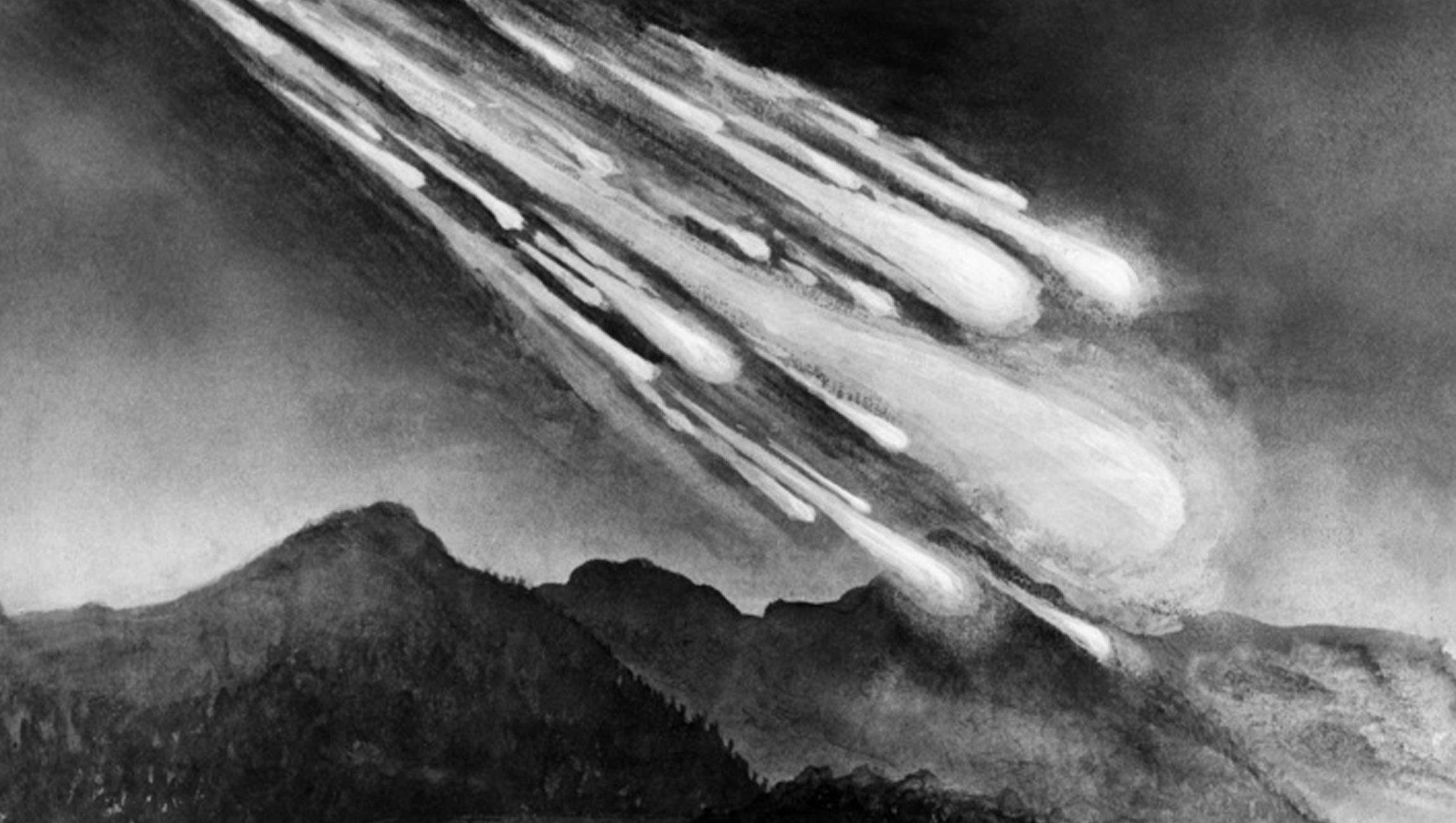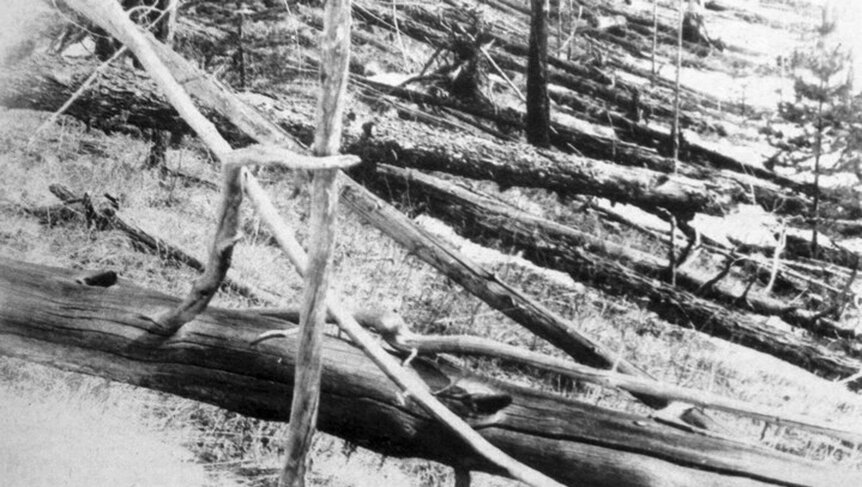Create a free profile to get unlimited access to exclusive videos, sweepstakes, and more!
Mystery of how Earth barely escaped a mega meteor is finally getting some backup

When a meteor zooms toward Earth at 45,000 mph with the strength 10-15 megatons of TNT—185 times more energy than the Hiroshima atomic bomb—it could possibly take out the entire planet.
If something like that doesn't scream total annihilation, it’s hard to say what does, except this time it just missed. Scorched earth and flattened trees were all that was left of the mysterious object after it passed dangerously close to the Tunguska region of Siberia in 1908. Theories have ranged from a black hole colliding with Earth to a clash of matter and antimatter to an alien spaceship crash-landing. An eyewitness even swore the sky was being ripped in two. But why no crater? No debris? Now Vladimir Pariev and his team of Russian scientists believe that is because an iron meteor just barely missed Earth before its immense momentum and mass blasted it back into space.
“Probably, the most realistic version explaining the Tunguska phenomenon is the through passage of the iron asteroid body as the most resistible to fragmentation across the Earth’s atmosphere,” Pariev said in a study recently published in Monthly Notices of the Royal Astronomical Society.
Meteors usually shatter into pieces as they hurtle through Earth’s atmosphere. Any space rock smaller than a football field across will shatter a few miles above the surface. The atmosphere vaporizes the space rock into shards that its intense kinetic energy soon morphs into heat, so anything that remains is just cosmic dust floating around. For over a century, this was believed to be the reason scientists kept scouring for evidence that eluded them.
An alternate theory was that a comet left that gaping wound in Siberia. Comets are made of ice, so the problem with that is that the ice would have been totally vaporized long before the estimated trajectory of the object ended. It seemed like a dead end until—wait, what if the meteorite was made of iron?
What was being overlooked for so long is the stuff that rock could have been made of. Pariev and his team simulated the close encounter with objects made of stone, ice, and iron shooting across the atmosphere about 6 to 9 miles above the surface. An iron meteor would have been the only one capable of keeping most of its mass throughout its trajectory of about 1,864 miles without being crushed to pieces or vaporized. Some of it would escape as gas and plasma, but a negligible amount in comparison to the rest of the object. The speed at which it passed over Tunguska was enough to generate a sonic boom that flattened trees and left the land charred.
But why was there no actual proof of this hunk of iron ever found? Any dust that fell to the ground would have been indistinguishable from iron that originated on Earth.
“Maximum resistance to fragmentation is characteristic of iron [space objects], which is associated with the high homogeneity of their internal structure. In contrast to the iron … the internal structure of stone and ice [space objects] is heterogeneous with an abundance of numerous microcracks,” Pariev explained as to why anything made of rock or ice would have been doomed, adding that the new iron theory “is supported by the fact that there are no remnants of this body and craters on the surface of the Earth.”
Anything like the Tunguska event is only supposed to happen every 100-200 years. Still, if you look up and it seems like the sky is splitting open, just run.



























